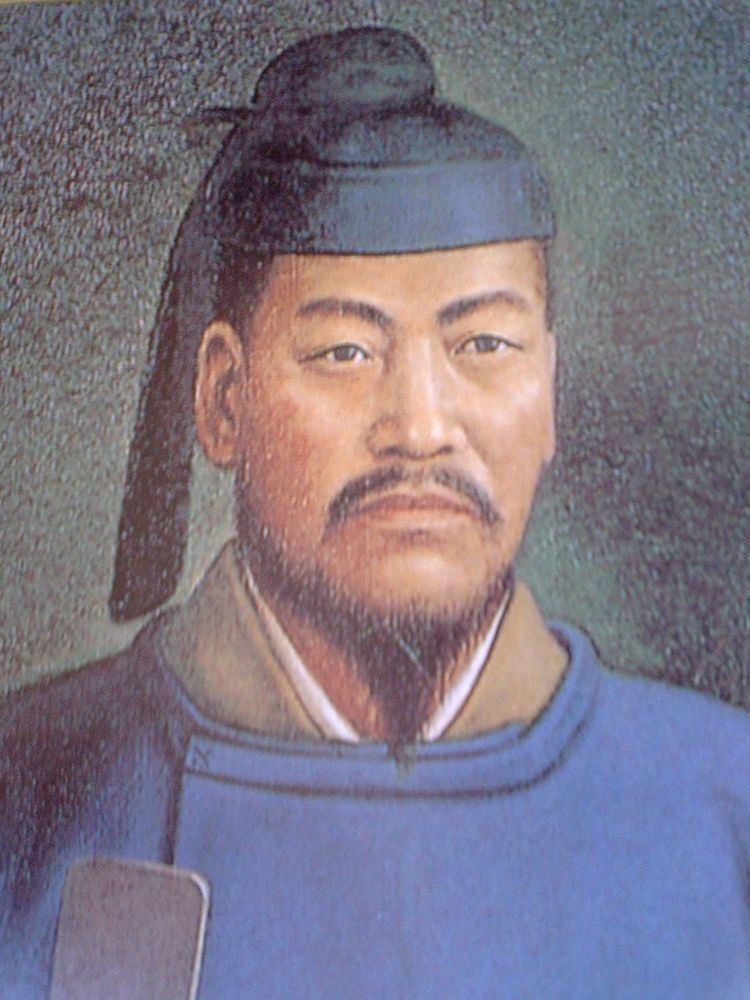Reign 629–641 Name Emperor Jomei Mother Princess Nukate-hime | Successor Kogyoku Spouse Empress Kogyoku | |
 | ||
Burial Osaka no uchi no misasagi (Nara) Father Prince Oshisaka-no-hikohito-no-Oe Children Emperor Tenji, Emperor Tenmu Parents Prince Oshisaka-no-Hikohito-no-Oe, princesse Nukate-hime Grandchildren Princess Nukata, Empress Jito, Prince Toneri Similar People Emperor Tenji, Emperor Tenmu, Emperor Jimmu | ||
Emperor Jomei (舒明天皇, Jomei-tennō, 593 – November 17, 641) was the 34th emperor of Japan, according to the traditional order of succession.
Contents
Jomei's reign spanned the years from 629 through 641.
Traditional narrative
Before Jomei's ascension to the Chrysanthemum Throne, his personal name (imina) was Tamura (田村) or Prince Tamura (田村皇子, Tamura-no-Ōji). As emperor, his name would have been Okinagatarashihi Hironuka Sumeramikoto (息長足日広額天皇).
He was a grandson of Emperor Bidatsu, both paternally and maternally. His father was Prince Oshisakanohikohito-no-Ōe, his mother was Princess Nukate-hime, who was a younger sister of his father.
Events in Jomei's reign
He succeeded his great aunt, Empress Suiko. Suiko did not make it clear who was to succeed her after her death. Before her death, she called Tamura and Prince Shōtoku's son, Prince Yamashiro-no-Ōe, and gave some brief advice to each of them. After her death the court was divided into two factions, each supporting one of the princes for the throne. Soga no Emishi, the head of Soga clan, supported Tamura. He claimed that Empress Suiko's last words suggested her desire that Tamura succeed her to the throne. Prince Yamashiro-no-Ōe was later attacked by the Soga clan and committed suicide along with his entire family.
Jomei's contemporary title would not have been tennō, as most historians believe this title was not introduced until the reigns of Emperor Tenmu and Empress Jitō. Rather, it was presumably Sumeramikoto (written the same way as tennō: 天皇) or Amenoshita Shiroshimesu Ōkimi (治天下大王), meaning "the great king who rules all under heaven". Alternatively, Jomei might have been referred to as (ヤマト大王/大君) or the "Great King of Yamato".
During Emperor Jomei's reign, Soga no Emishi seized several political initiatives. After Jomei's death, the throne was passed to his wife and niece, Princess Takara and then to her younger brother, Emperor Kōtoku, before eventually being inherited by two of his sons, Emperor Tenji and Emperor Tenmu.
Emperor Jomei's reign lasted 13 years. In the 13th year of his reign (舒明天皇十三年), he died at the age of 49.
The actual site of Jomei's grave is known. The emperor is traditionally venerated at a memorial Shinto shrine (misasagi) located in Nara Prefecture. The Imperial Household Agency designates this location as Jomei's mausoleum. It is formally named Osaka no uchi no misasagi.
Poetry
The Man'yōshū includes poems attributed to emperors and empresses, including "Climbing Kagu-yama and looking upon the land", which is said to have been composed by Emperor Jomei:
Consorts and children
Empress: Princess Takara (宝皇女) (Empress Kōgyoku) (594?–661)
Hi: Princess Tame (田眼皇女), daughter of Emperor Bidatsu
Bunin: Soga no Hote-no-iratsume (蘇我法提郎女), daughter of Soga no Umako
Bunin: Awata no Kagushi-hime (粟田香櫛媛)
Bunin: Soga no Tetsuki-no-iratsume (蘇我手杯娘), daughter of Soga no Emishi
Court lady (Uneme): a lower court lady from Kaya (蚊屋采女姉子) (Kaya no Uneme)
